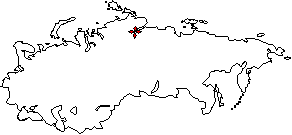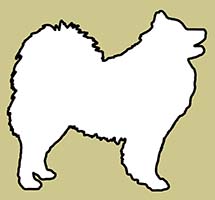The Dolgans

The self-designation is dolghan, dulghan (meaning probably ‘people living on the middle reaches of the river’), but the following names have also been used: toa, pl. toalar, toakihi, pl. toakihilär ‘people of the wood’, toatagolar ‘nomadic people’, tagal or tägäl, ‘a tribe, a people’. The self-designation of the Yakuts, haka or saha, has also been recorded.
In 1935–59 the self-designation of the Yakuts, saha, was used as an official Russian name for the Dolgans inhabiting the Taimyr National Territory. The Dolgans themselves do not identify with the Yakuts, and they actually differ considerably from the Yak their language and their ethnic culture.
The variety of self-designations reflects the ethnic history of the Dolgans, and the relatively short span this history encompasses. The name Dolgan became known outside the tribe itself only as late as the 19th century.
Habitat. The Dolgans inhabit an area in the southern part of the Taimyr
(Dolgan-Nenets) National Territory, in the Khatanga and Pyassina river basins, and to a lesser extent on the Yenisey (the Dudinka district). A few dozen Dolgans live in Yakutia, on the lower reaches of the River Anabar. On the Taimyr Peninsula the Dolgans are the most numerous indigenous ethnic group.
Population.
| Year | Population |
| 1897 | 1,224 |
| 1926/27 | 1,445 |
| 1939 | 2,032 |
| 1959 | 3,871 |
| 1979 | 5,100 |
Since the beginning of this century other Yakuticized (i.e. Dolganized) ethnic groups have probably been recorded as Dolgans, for instance Russian peasants living on the tundra, the Evenks of Taimyr and to some extent even the Yakuts. According to data recorded by B. Dolgikh, in 1926–27 the number of the Dolgans was 4,072. During the censuses tribal identity has probably played an important role in the determination of national identity.
Anthropologically the Dolgans belong to the North Asiatic group of the Mongolian race.
Etnologically the Dolgan society is formed of the Yakut and Tungus clans Dolgan,
Dongot, Edjan or Edzhen, and Karanto or Karóntuo. Over time these clans have been joined by other Yakut or Evenk groups, and, to a lesser extent, by the Enets and the Nenets. There also existed a group of Russian settlers on the River Heta, who, by the end of the 19th century, had become Dolganized and had gradually adopted the way of life of nomadic reindeer breeders. According to Dolgikh’s data the proportion of the different ethnic groups in the formation of the Dolgan people was as follows: Tungus — 50–52 percent, Yakut — 30–33 percent, Russian — 15 percent, and Samoyed — 3–4.

The present-day Dolgans consider themselves to be a separate people, and they do not identify with the Yakuts or the Evenk. There are different opinions concerning the origin of the Dolgans. Some researchers have stated that they are Yakuticized Evenks or Evens. A part of the Dolgans were probably formed in this way, but this cannot be said of the ethnic group. It has also been suggested that the Dolgans are Yakuticized Nganasans. Dolgikh refutes this opinion. The pagan Nganasans avoided the Dolgan newcomers, who belonged to the Russian Orthodox faith, and regarded them as inferiors.
As late as the 17th century the Taimyr Peninsula was occupied by Samoyedic tribes. The Dolgans, or the Dolgans to be, had not yet arrived. The tribes forming the nucleus of the Dolgans migrated from the banks of the River Lena at the end of the 17th century. One of the reasons for migration was the fact that Russian goods, flour, for instance, were coming to the Taimyr Peninsula by the boats on the Lena.
In the census of 1959 not all the Yakut-speaking inhabitants of the Taimyr National Territory identified themselves with the Dolgans, some considered themselves to be Yakuts. This indicates that they had only recently arrived in the area.
The Dolgans formed as an independent ethnic group during the last century. To some extent this process has been recorded. In addition to all the other factors of their ethnic formation, the Dolgans were administratively separated from all the other Yakut-speaking tribes, belonging to the province of Yenisey, not to the Yakut region.
Language. The Dolgans speak a dialect of the Yakut language. This dialect has also at times been considered as a separate language, due to the strong Evenk influence which causes it to differ considerably from the Yakut language spoken in the northwestern and middle parts of Yakutia.
In certain western groups of Dolgans, a strong Nenets influence has been noted (for example in Sopochnaya Karga at the Yenisey Bay).
Since World War II the influence of Russia has increased, this despite the low incidence of Russians amongst the Dolgans. During the process of collectivization many Dolgans were forced to join large farms with mixed populations. Children were also removed to boarding schools where they spent the greater part of the year separated from their homes native language. Dolgan intellectuals came to prefer to speak Russian, and it was accepted that if a person wished to advance their career then they had to speak fluent Russian.
History. When in the 17th century the Russians came to central and eastern Siberia, some Tungus clans calling themselves Dolgans were living in the estuaries of the Vilyui and Muna rivers and on the coast of the Okhotsk Sea. In 1841, when the administration of the province of Yenisey sent information to the Russian Academy of Sciences to help with the preparations for the expedition of A. von Middendorff, the Dolgans were mentioned as a separate people. The first data on the Dolgans was in a book by M. A. Castrén “Reiseberichte und Briefe aus den Jahren 1845–1849”, published in St. Petersburg in 1856.
In 1930 the Taimyr, or Dolgan-Nenets National Territory, was proclaimed. The next year the old tribal councils were liquidated, and new territorial councils were formed. At the same time the process of collectivization was begun. The result was the complete destruction of the Dolgans’ traditional economy.
Ethnic culture. The Dolgans used to move along the northern border of the forest zone. The majority of the Dolgans wintered here at the Great Russian Road of the Khatanga Tract in the area from Lake Pyassino in the west, to the lower reaches of the Anabar in the east. In summer they moved north, on to the tundra. The reindeer herders and the hunters of the tribe moved even further north. The traditional economy was based on fishing and reindeer — hunting the wild and rearing the domestic. The Dolgans also sold the furs of polar foxes. They moved over the tundra on wide skis, dog-sleighs bark boats, and also rode reindeer. The Dolgans lived in conical tents and wore mostly furs for clothing.
Within the Dolgan society a patrilineal system prevailed. The old social organisation, for the most part, disintegrated in the 19th century, but some customs, for instance, the collective hunt for wild reindeer, have survived. It is of interest that although the hunting equipment was privately owned, the catch was considered common property and it had to be divided among all the families and households.
Under Soviet rule the Dolgans were forced to settle down as part of collective farms, as were all the Siberian peoples. However, in the case of the Dolgans, the effect of this was especially damaging. The Russian influence has become such that Russian words are even used in connection with reindeer rearing, and have come to be used as the names of animals.
In 1935 the city of Norilsk with mines and natural gas factories was built in the Dolgan area. The western Dolgans were forced out of their territories, in an attempt to escape the industrial pollution.
Writing. The Dolgans have no writing of their own, and instead use Russian. The Yakut script is alien to the Dolgans, and therefore unsuitable for use in their schools.
